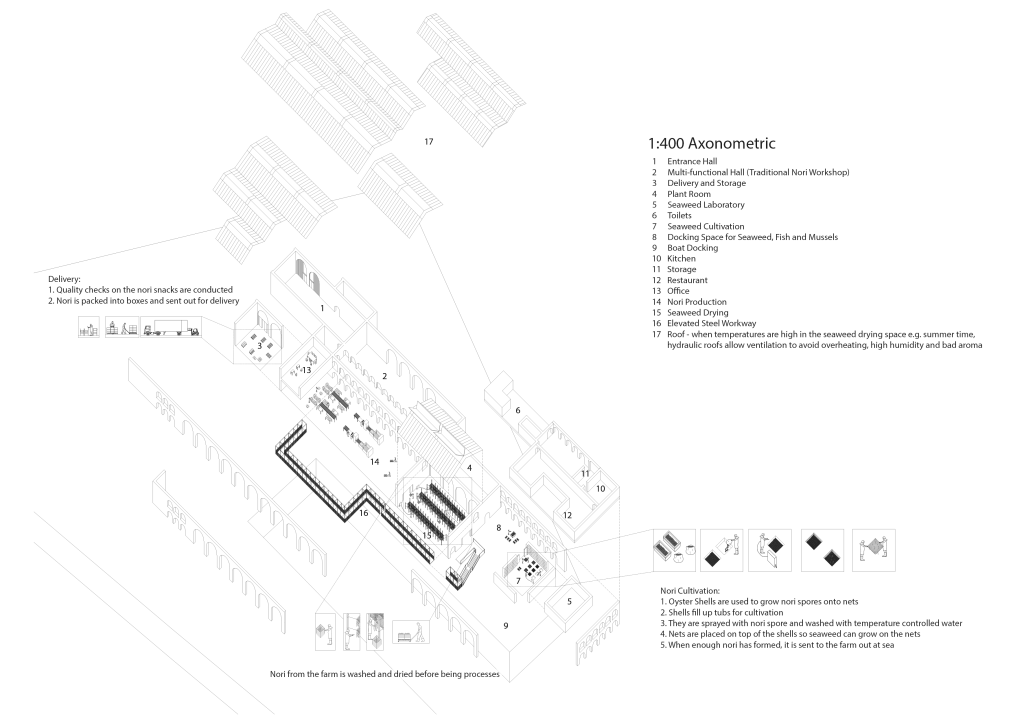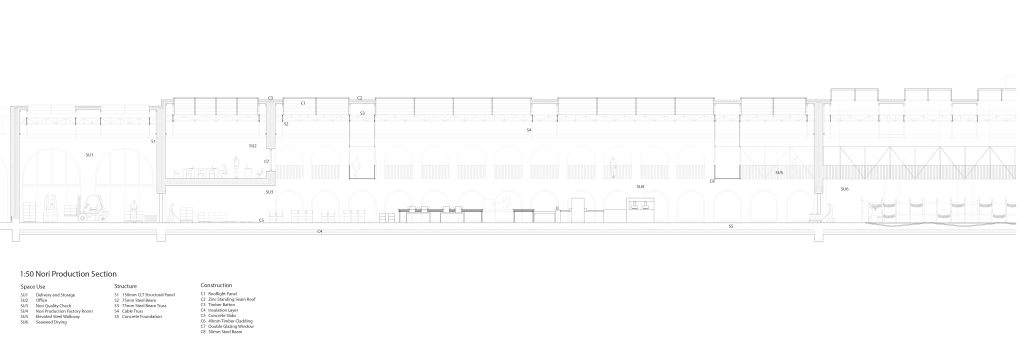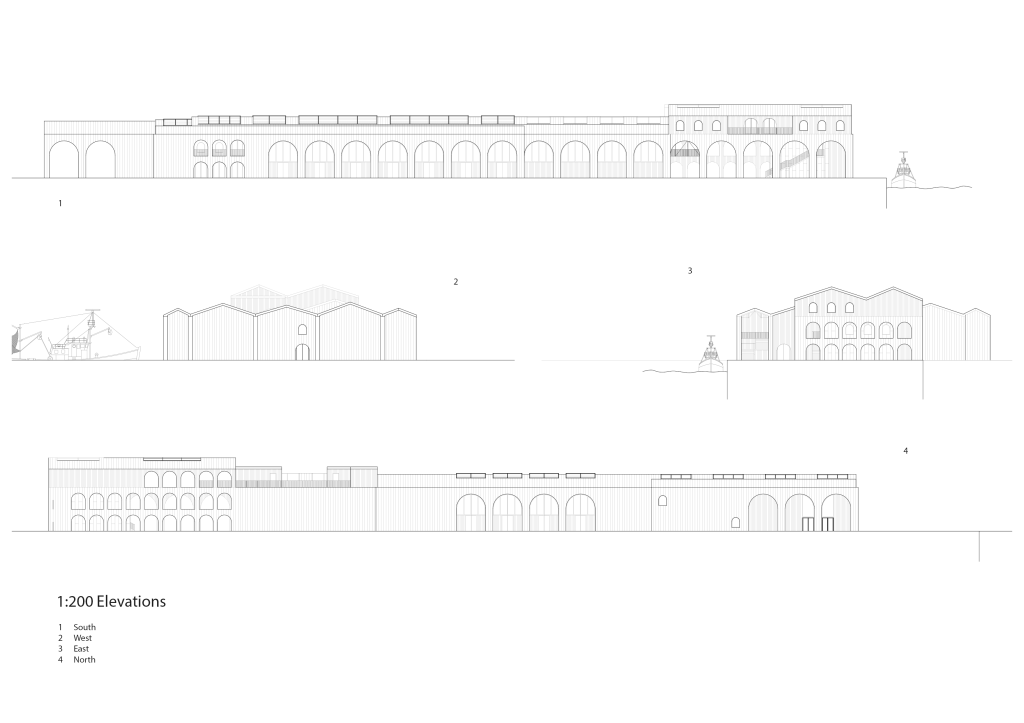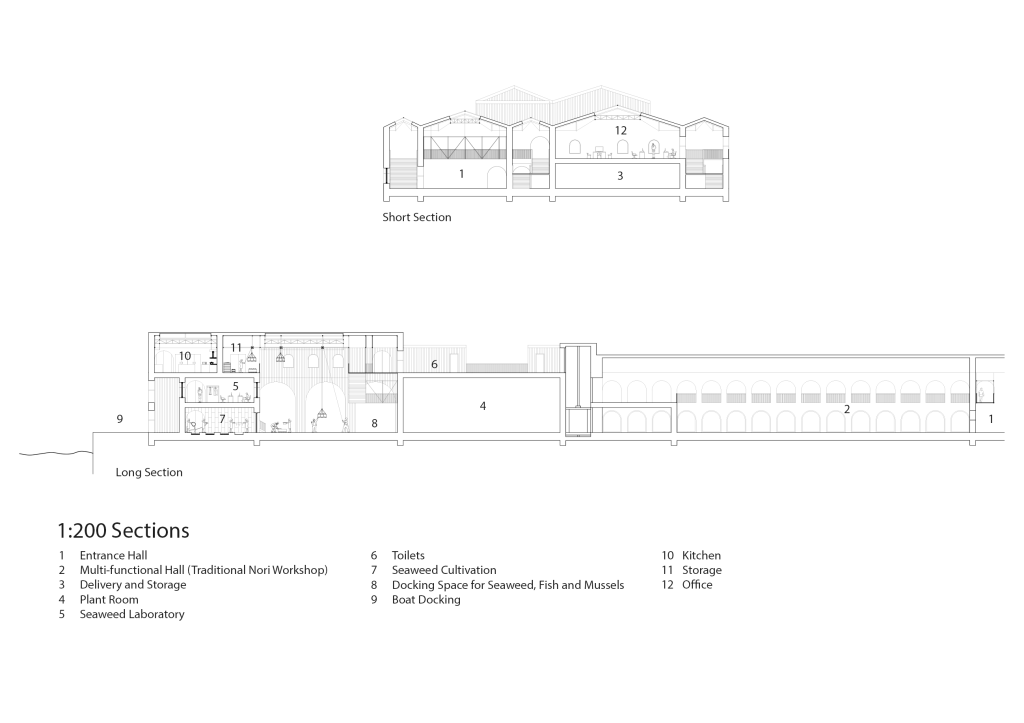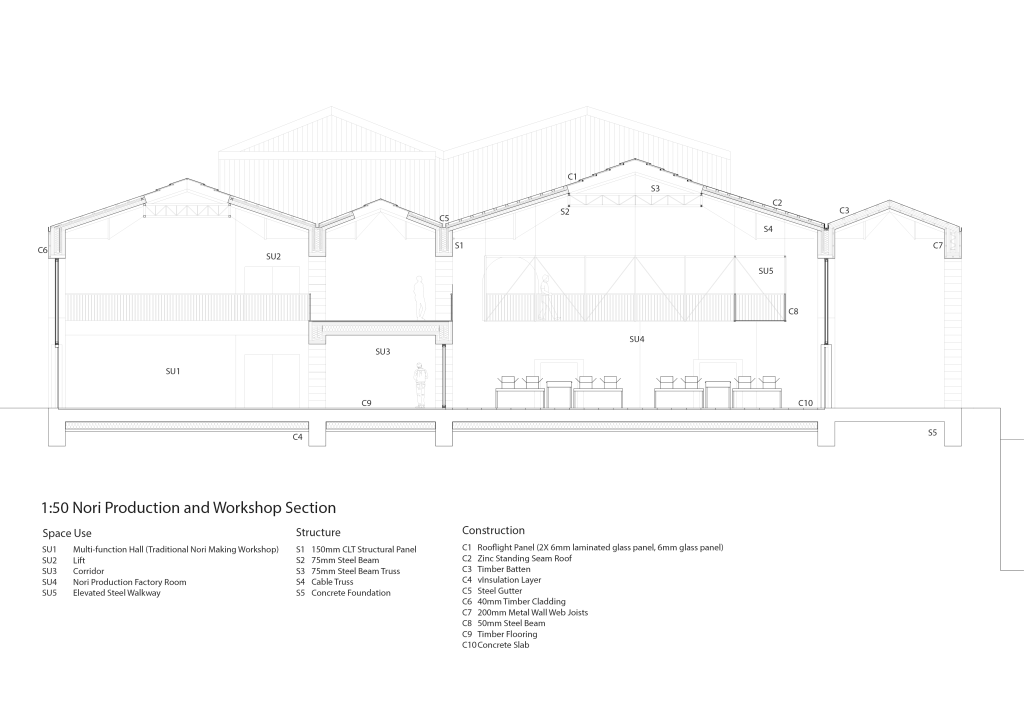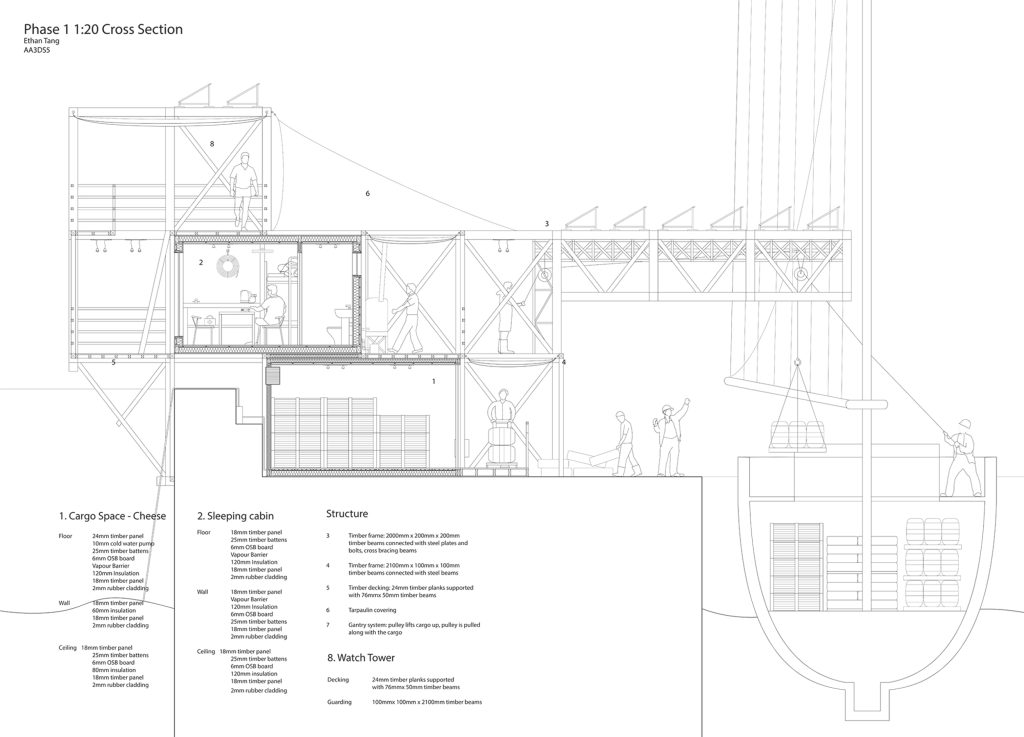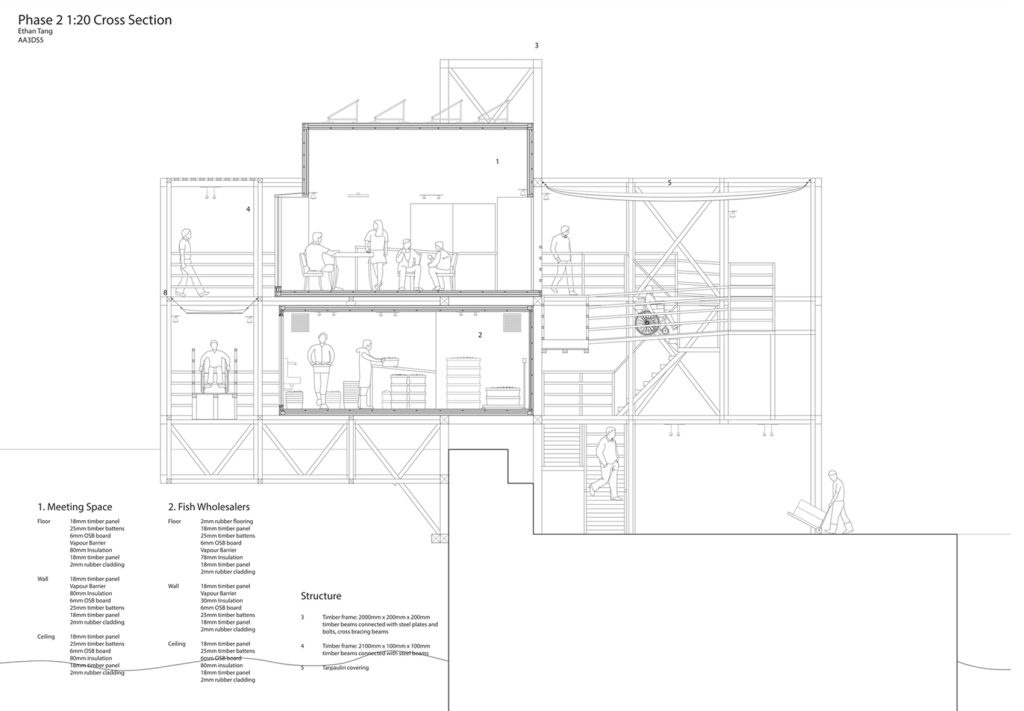Ethan Tang
A New Industry for Par
Seaweed is a natural product with incredible properties that is starting to be utilised increasingly in today’s climate; with local offshore farms beginning to sprout up in Cornwall, the Par Horticultural Seaweed Centre is both a processing plant for horticultural seaweed products and a community space for locals and tourists alike. While distributing these amazing products across the country it was also important to ensure that the project also gave back to the community, with spaces for events, a beautiful garden to enjoy and tourist attractions to experience; bringing people together in Cornwall and providing a new route for income in one of the most impoverished counties in England. Each “wing” of the dock represents the two areas of both ‘production’ and ‘community,’ combining in their use and processing of seaweed.
Par has been home to a bustling mining industry for minerals and famous for transporting China Clay over the world. As this industry has slowly declined and much of its operations has moved elsewhere, a new industry is much needed for Par which can once again integrate the local community together. Seaweed is a natural product with increasing importance to the climate and as a healthy food product for humans, and is a staple amongst the Eastern World. Using nori seaweed as the new industry for Par enables the introduction of seaweed as a common and healthy food product into the UK.
Par’s new seaweed industry is integrated with the town’s historical mining industry into a building that combines one of Par’s historical landmarks, the Treffry Viaduct, once the image for China Clay mining, with a new purpose as the place for seaweed production. The building’s viaduct structure is not only echo Par’s historic symbol for its past mining identity, but is a symbol of moving between time, where the viaducts represent both the old and new industries for Par, and the building allows visitors to explore the changes and history of traditional and modern production of nori seaweed.
Email: ethan.tang28@hotmail.co.uk
LinkedIn: www.linkedin.com/in/ecltang
Instagram: ethantang28
Braced for Shipping
Introduced in the heart of Reading Town, Hogmanay, the Scottish celebration of New Years, brings a large infusion of culture and festivity to the local area. Cock-a-Leekie soup, being an integral cuisine of the Scottish, accompanies the festivities. The influx of Hogmanay culture, introduced by the arrival of the Soup Facility, will indulge Reading in a host of traditions that seek to bring people together to celebrate the New Year and the fresh start that follows midnight. On New Year’s Eve in Reading, the public are invited to join in the activities, including; farming the ingredients for the soup, trying the soup, setting Juniper branches alight at midnight, Ceilidh dancing, drinking homemade Gin, and the chance to watch as the chefs produce the soup from raw ingredients on site.
Cock a Leekie , Scotland, Timber, Homemade, Feathers, New years
The shipping industry may not have the same damaging impact as the built environment does on climate change and the environment in terms of carbon emissions. However, the shipping industry is responsible for increasing carbon emissions. The project concentrates on cementing sustainable shipping as the norm in the near future. Based in the shipping town of Penzance, Cornwall, the project will be a base for sustainable shipping company Timbercoast, importing and exporting Cornish cheese, UK produced beer and Colombian coffee and cocoa beans sustainably across the Atlantic using the Avontuur.
The base consists of a demountable modular timber structure gripping onto the harbour wall, using joinery techniques and metal screws to provide a temporary operation base, shelter and cargo storage. The ease of deploying the timber structure allows for the shipping operations to be taken to where ever it is needed to reduce the carbon footprint of shipping cargoes worldwide. The timber structure is an open structure that accommodates a range of different needs and rooms that can be put together easily and quicker due to its modular system, and can adapt by allowing different rooms to be connected regardless of its requirements.


